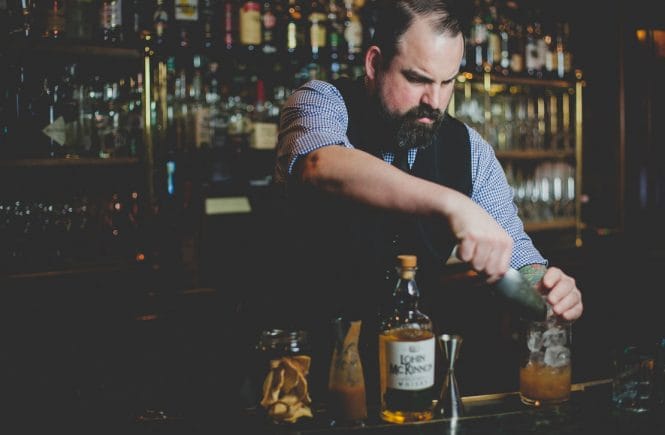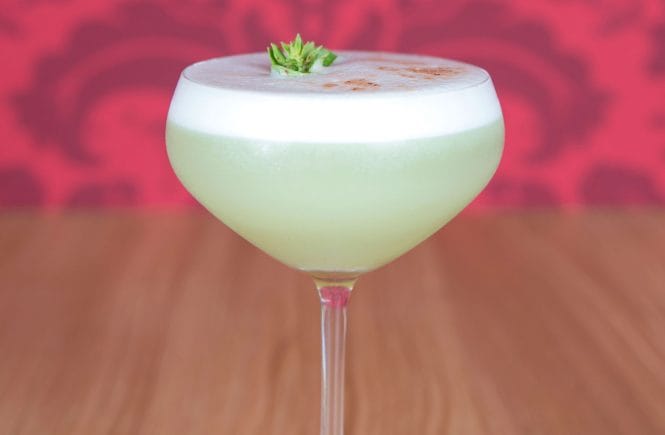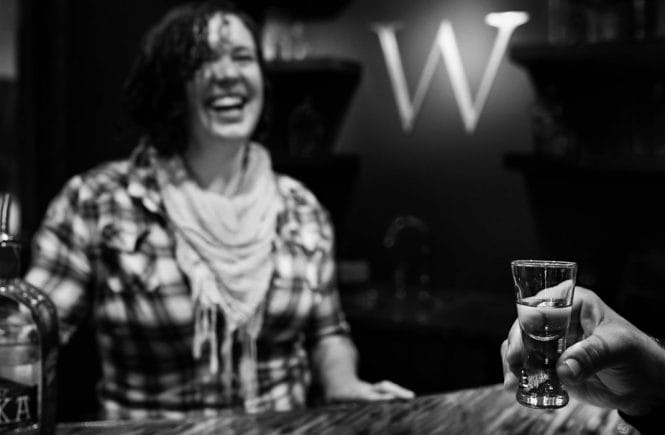In Barbados, rum defines a well-balanced thirst quencher
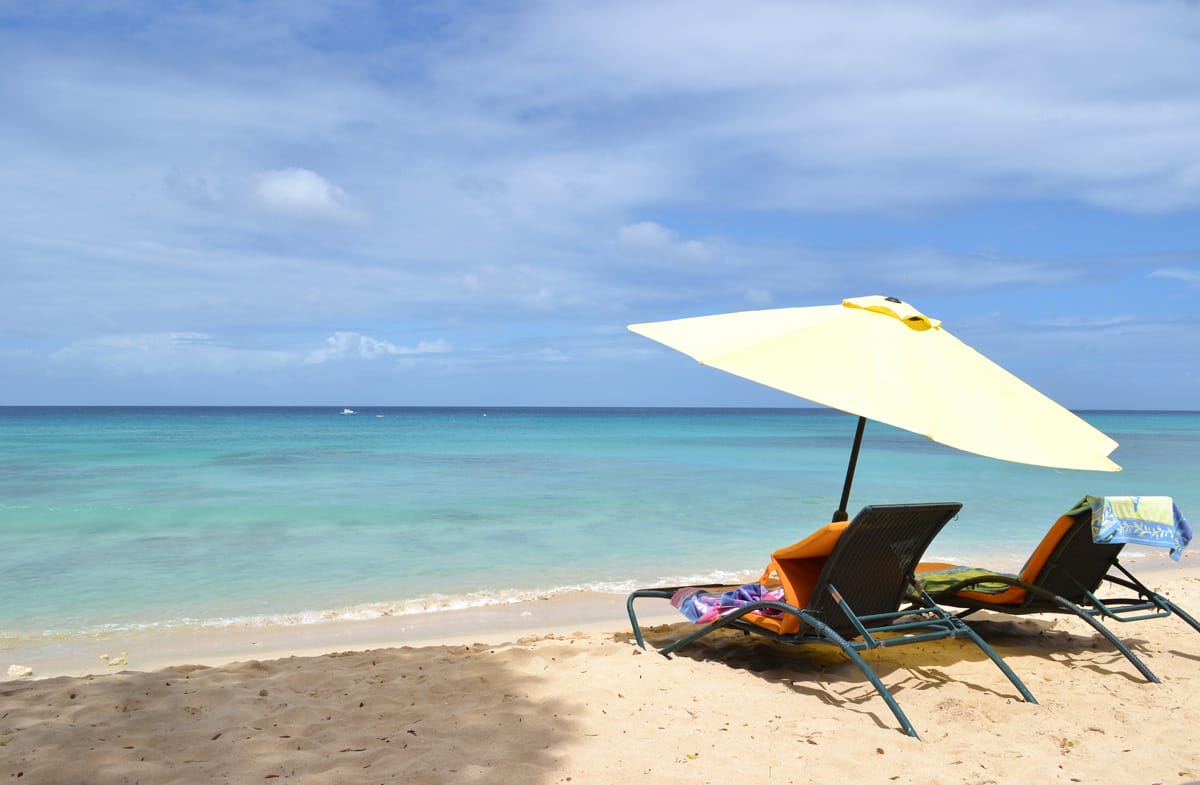
It won’t take long, once you’ve landed in Barbados, before someone presses a glass, sparkling with condensation and filled with an amber elixir, into your hand. Welcome to the famous Barbados rum punch and the taste of island life.
In Barbados, rum punch is enjoyed by everyone from farm workers to property tycoons to pallid newcomers from wintry climes. And it’s enjoyed everywhere from the verandas of grand plantation houses to the tailgate of a jeep in the jungle.
How rum punch came to be the national drink is unknown, but not exactly surprising.
For one thing, Barbados is widely considered the birthplace of rum. The Mount Gay Distillery possesses the first legal document referring to rum, dated 1703, although plantation records suggest that it was being made there at least as far back as 1667. An even earlier letter from Barbados, dated 1651, reports: “The chief fuddling they make in the island is Rumbullion, alias Kill-Divil, and this is made of sugar canes distilled, a hot, hellish, and terrible liquor.”
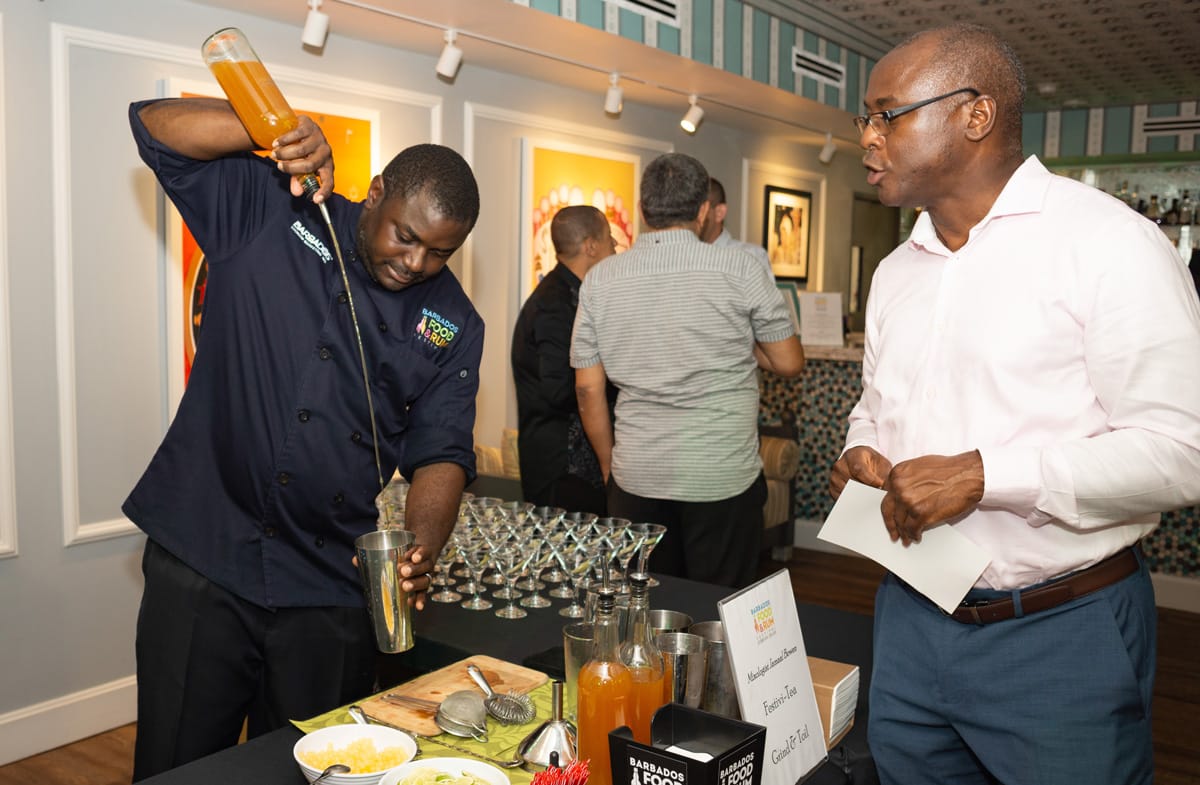
at the annual Barbados Food and Rum Festival. BTMI photo
It’s believed that slaves who worked on plantations discovered that fermenting molasses, the byproduct of sugar production, made for a tasty and intoxicating beverage. European ex-pats distilled that mash according to the whisky- or brandy-making skills they brought from home. Barrel aging smoothed out the rough edges and rum became more and more popular, spreading from Barbados throughout the Caribbean and beyond. By the mid-18th century, rum was the biggest manufacturing industry in the colonies.
Meanwhile, across the globe, the 17th century also saw the popularization of another boozy beverage. It was inevitable that the two would come together.
In the Far East, the British sailors of the East India Company had been drinking the local sugar cane spirit known as arak in a thirst-quenching mixture they called punch. (The word “punch” evolved from the Sanskrit word “panch,” meaning “five” and referring to the five essential ingredients of punch: liquor, citrus, sweetener, spices and water, tea or juice.)
“The best guess we can muster is that it was a 17th-century English sailor on his way to India who first mixed medicinal brandy from the ship’s store with water and a few simple ingredients obtained along the way,” writes drinks historian David Wondrich. “By the 1660s, English sailors had spread punch from its origins in the Indian Ocean to the Caribbean, where it’s been the characteristic drink of the region ever since.”
Indeed, wherever you travel in the Caribbean, you are sure to encounter some form of punch, usually a sweet, fruity concoction like Planters Punch (dark rum, pineapple or passionfruit juice, grenadine, soda).
But the most classic of the Caribbean punches is the Barbados version. It is simplicity personified: aged rum, sugar, lime juice, water, a dash of bitters, a sprinkle of nutmeg. Clean, refreshing, well-balanced, sweet and tart in equal measure, it’s boozy enough to have a kick, but light enough to be sessionable.
Little wonder then, that it’s become the favourite sipper of this island nation, capturing in a glass the essence of its sunny skies, sandy beaches, swaying palm trees and ocean breezes.
A POETIC PUNCH: No need to remember the recipe. Just remember this rhyme, and you can always whip up an easy, refreshing Barbados rum punch.
One of sour,
two of sweet,
three of strong
and four of weak,
a dash of bitters
and a sprinkle of spice,
serve well chilled
with plenty of ice.
PASSION FOR PUNCH: An alternative version of Barbados rum punch sees the water being replaced with passionfruit juice—if you do this, be sure to reduce the amount of simple syrup so it’s not overly sweet.
—by Joanne Sasvari


